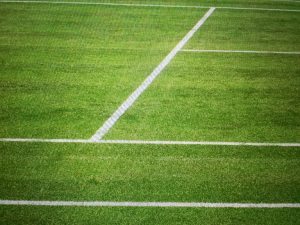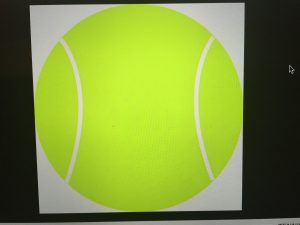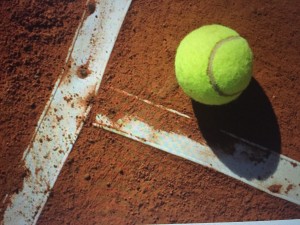Grass tennis courts
Grass tennis courts are amazing to play on. When I first stepped on a grass tennis court in White City, New South Wales, Australia, I felt I was playing on a carpet surface similar to the one in my parents living room. It was awesome. I felt like I had come home. Some players adapt to a favorite surface. It took one time for me to realize – grass was it for me.
Grass courts have changed from the time (mid 70’s) I played to now. Those changes came around 1995. The grass used before that year was different. The length of the grass was longer. Also, the soil was not rolled as much then, so presented a different kind of game – more serve and volley than in the present day game.
Ugly is Good?
Again, back in my day, the expression to use when playing grass tennis was, ‘ugly is good’. It simply meant to expect the unexpected on the bounce. The soil was softer and if not rolled consistently there could be unpredictable bounces. The grass was longer and depending on the player opposite you could be facing a ‘slice and dice’ kind of player, which on grass could present fits when trying to field their shots. Underspin lent a difficulty to playing the ball that, when it made contact with the grass, skidded and stayed low. Anyone with a bad back did not want to call grass their favorite surface. A drop shot, executed at the right time, did not want to come up to a normal height on its bounce. The grass and soil acted as a ‘sponge’ and took the energy out of the bounce so it stayed very low. Serve and volley was the way to go back then.
Nowadays, the grass is a different texture and the soil is harder. The grass is also shorter and in 2001 the mix was changed again, to acommodate the longer rallies with the harder soil composition that caused more groundstroke rallies. Serve and volley on grass has largely become a thing of the past, with the change in grass and soil. Now serve and volly is mixed in once in awhile, but not used on a point by point basis as in the past.
Another aspect of grass court tennis is the wear and tear on the grass. Players in the past would wear out the serve area and the ‘t’ at the service line due to serve and volley. Now the baseline has become the predominate area of wear and tear with only some occurring at the ‘t’.
Grass court tennis used to be incomparable to other surfaces. With moisture (or not) on the grass, wear and tear on the surface of the grass itself, humidity versus drier conditions affecting the ball travelling through the air, it is still a different experience, but maybe not as much as in the past. This coming from a player who loved the ‘ugly is good’ play on the grass courts back in the day. Today it allows for groundstrokes to be predominate and loses the excitement of taking the ‘risk’ of creating low bounces with drop shots, underspin approach shots, etc.
As you can see I am a big fan of grass court tennis. How about you? Do you have a favorite surface? Have you ever played on grass?




